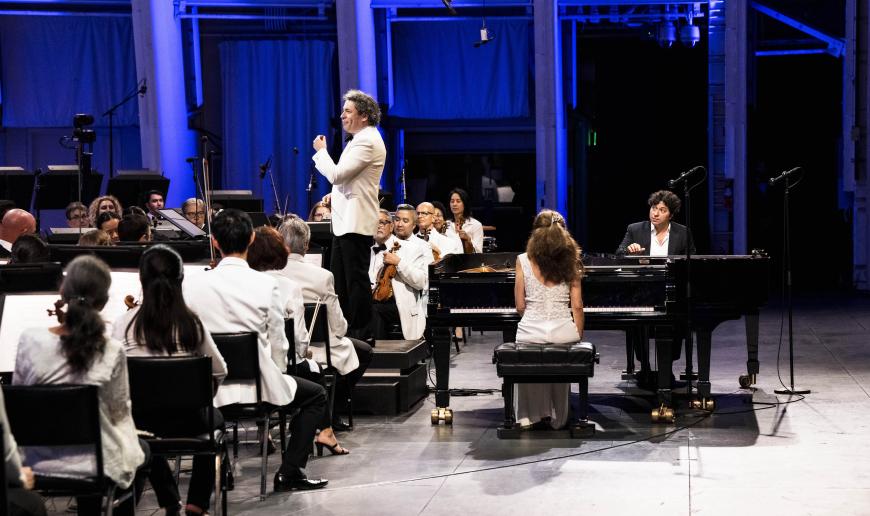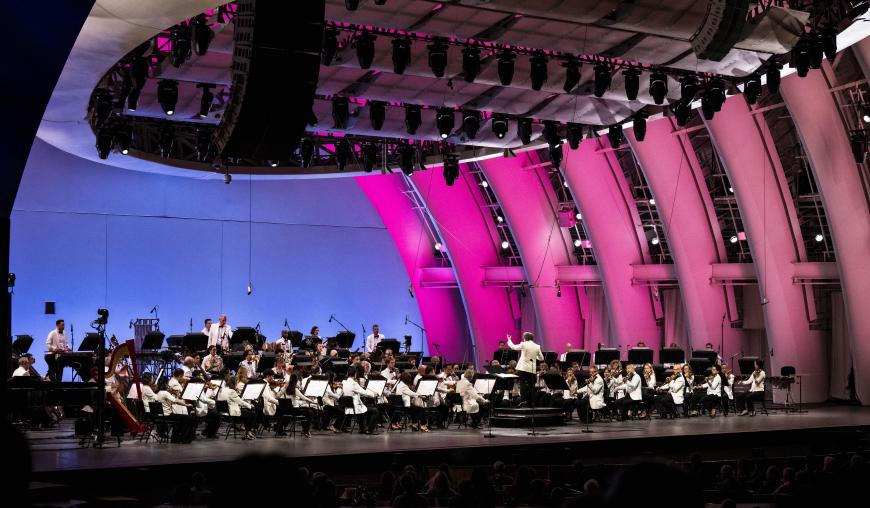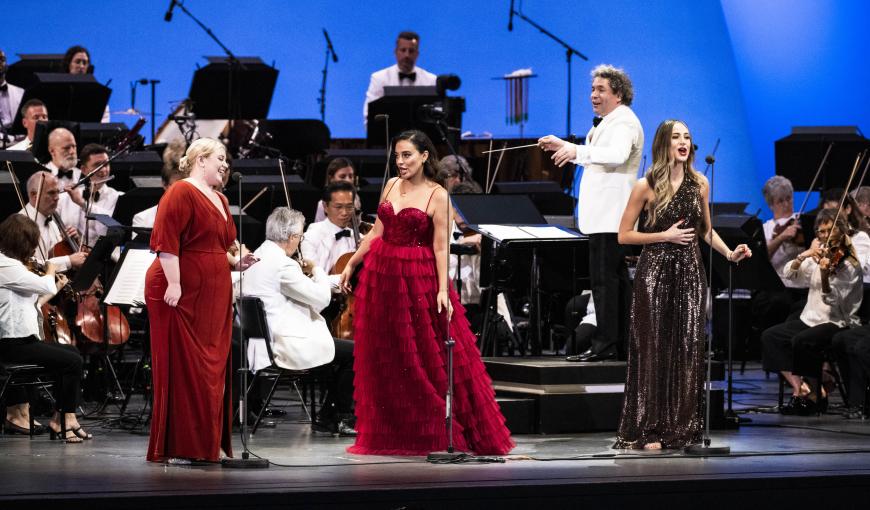
Gustavo Dudamel had a few things on his mind that he wanted to say to the audience at the Hollywood Bowl on Tuesday night, Sept. 3. First, he was reshuffling the order of his program with the Los Angeles Philharmonic, moving Camille Saint-Saëns’ The Carnival of the Animals from after intermission to the first half of the concert, with the Spanish-tinged music by Georges Bizet and Roberto Sierra now making up the entirety of the second half. That made sense.
Dudamel then said that his own young son, Martín, would be doing the narration for Saint-Saëns’ musical menagerie — via, it transpired, a prerecorded voice track — adding to a fanciful series of cartoons from Ghost Animation depicting folk fables from India, Brazil, Australia, and Denmark. Father and son had already previewed this project in 2021 as part of Sound/Stage, the LA Phil’s streaming series recorded in the Bowl before rows of pandemic-emptied seats. The two pianists for that performance happened to be Yuja Wang and David Fung.
This time, before a live audience, the pianists were the Argentine-Venezuelan brother-and-sister duo of Sergio Tiempo and Karin Lechner, who engaged in some keyboard shenanigans during Carnival’s “Pianists” movement by playing deliberately and hilariously out of sync. That could be justified by the suggestion of the composer, who encouraged pros to play like beginners in this section.

The entire concert resembled something of an exciting introduction to classical music for young people — Carnival, of course, but also six vocal and orchestral excerpts from Georges Bizet’s Carmen, which overflows with good tunes, plus some percolating classical writing with a Latin twist by a living composer, Roberto Sierra (who was in attendance). You’ve got symphonic, operatic, and contemporary bases covered — savvy programming all the way.
Carnival received a sharp, smart, thoroughly involved performance from Dudamel and the LA Phil, very much aware of the satirical humor of Saint-Saëns’ score and eager to heighten it. Tiempo and Lechner likewise were pointed in their attacks, accents, and clarity. The folk tales selected to complement the music were related by Martín Dudamel Maturén in an articulate voice (he was 9 years old when the Sound/Stage episode was released), each story possessing a useful moral. Principal cello Robert deMaine essayed the famous solo in “The Swan” with straightforward lyricism.
Sierra, born in 1953 in Puerto Rico, is a cosmopolitan musician who trained with modernist composers in Europe, but he brings distinctly Latin American influences to his compositions in a fusion he calls “tropicalization.” For this concert, Dudamel chose two Sierra pieces, Fandangos and Alegría, that wave their Latin American flags boisterously. The former takes off from 18th-century fandangos by Antonio Soler and Luigi Boccherini, soon careening into triple-meter dance rhythms. Despite frequent changes in mood and many interesting quirks and bursts from the orchestra, the music never loses touch with the groove. Alegría is much shorter yet even trickier in its pounding, driving rhythms and glittering orchestration; I’m not sure if the Phil was as comfortable as Dudamel clearly was in this performance.

Sierra’s pieces bookended 22 minutes of Carmen excerpts. Dudamel turbocharged the Prelude and Act 4 Entr’acte, relaxed at a slowish tempo in the Act 3 Entr’acte, and coordinated the instrumental backing for three selections featuring mezzo-soprano Rihab Chaieb.
The role of Carmen has been treated to feminist interpretations in recent decades — the liberated woman who makes her own choices — but Chaieb seemed to revert to the traditional vamping sex-bomb Carmen in her renditions of the famous Habanera, Seguidilla, and Gypsy Dance (the last with supporting harmonies from soprano Kathleen O’Mara and mezzo-soprano Madeleine Lyon). She did all this quite well in a seductive, opulent-voiced manner, with every facial and vocal expression reflecting the words, whose English translations were projected on the Bowl’s giant video screens.
Though none of the male roles figured in this CliffsNotes-like summary of the opera, the performance nevertheless provided a marvelous entryway into Bizet’s inexhaustible tune fest for those who hadn’t heard it before.




